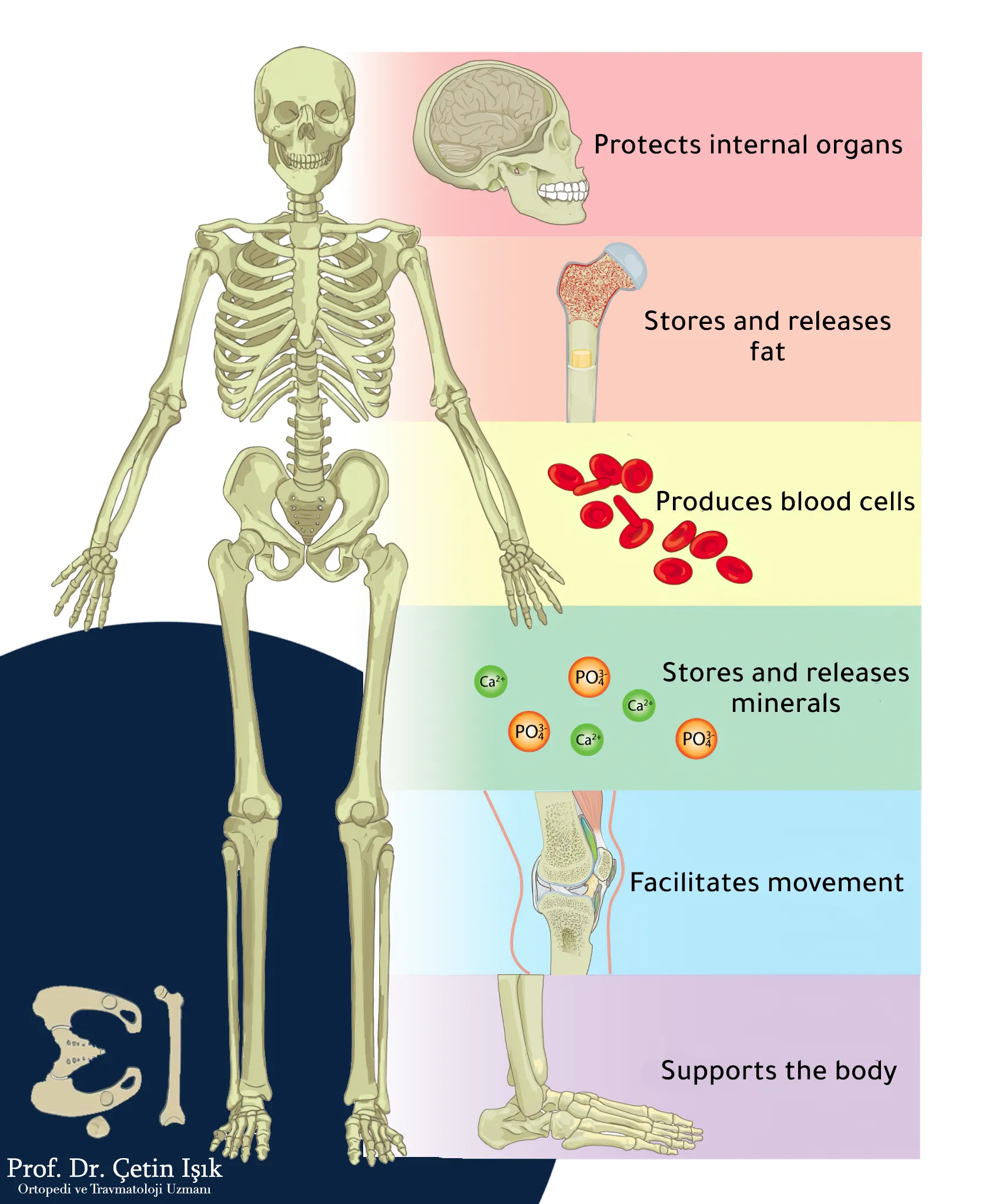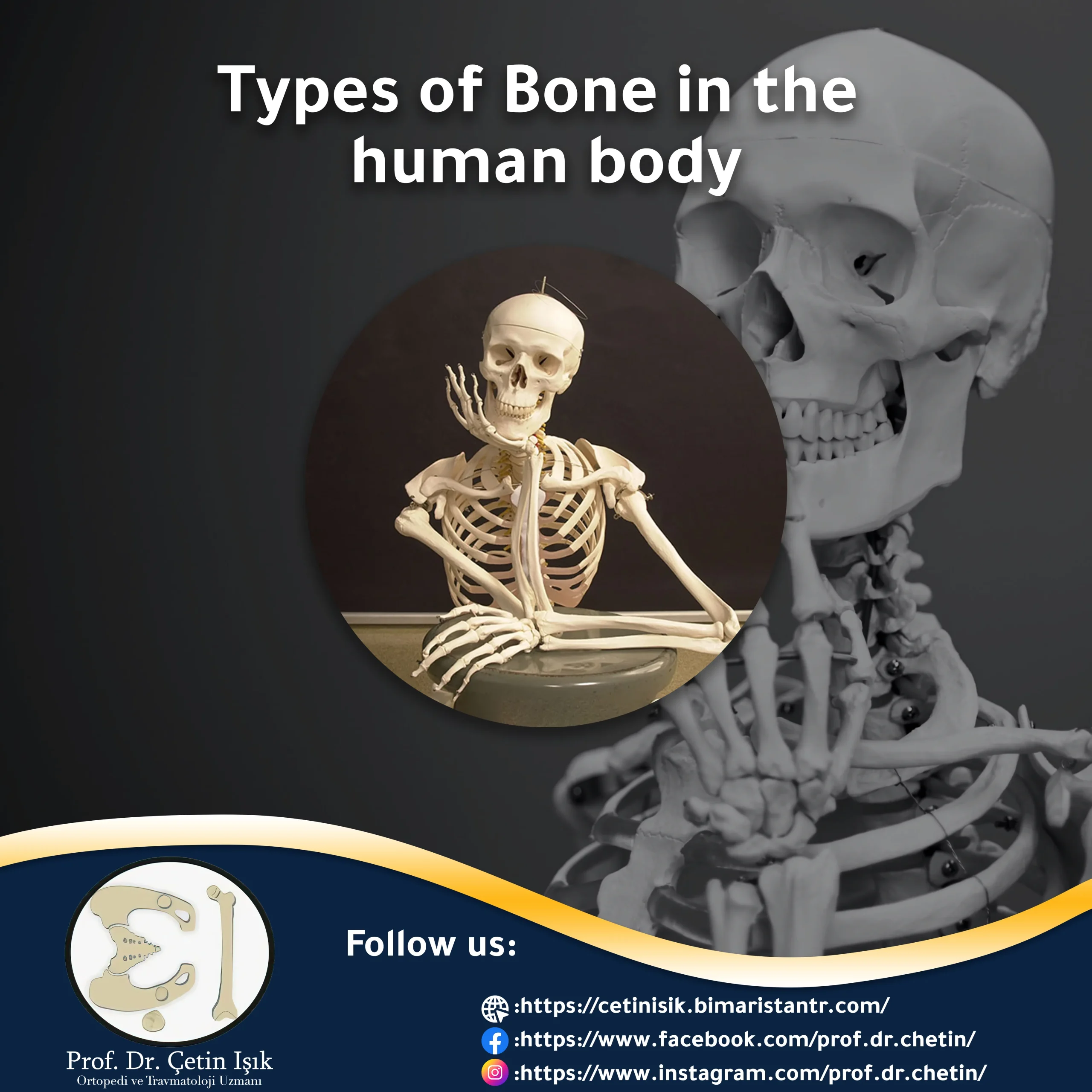Do you know the secret of standing on your feet? The reason is that you have a skeleton. Your ability to move, stand upright, and other things fall within the bones' functions. Do you know them?
Knowing bone functions is very important. An adult has about 206 bones, which have essential and multiple functions. They give him a beautiful harmonious appearance in addition to the other tasks they perform. What are those jobs? What is its importance to the human body? This is what we will learn about during our article.
Overview
Bones make up the skeleton that gives the body its distinctive shape, and the muscles of the body are based on the bones and ligaments that connect the joints between the bones. Bones are made up of different types of cells, and those cells have three different layers. Their overall structure is a combination of a protein called collagen and a molecule known as calcium phosphate woven into a strong and lightweight structure.
Cell types that make up bones and their most important functions
- Osteoblasts: They play a role in forming new bone tissue and help repair any bone damage.
- Osteocytes: They are mature cells that play an essential role in the bone maturation of newborns and the maintenance of bone tissue.
- Osteoclasts: Their function is to break down the bones and shape them into their correct form.
- Osteogenic cells: Stem cells that divide to give rise to osteoblasts.

Bone layers and their most important functions
- Periosteum: It is a tough outer layer that helps protect the bone.
- Dense (compact) bone: It is under the periosteum, which is hard and white, and is the main part of the bone that gives firmness and support to the skeleton.
- Spongy bone: It is a soft inner layer of bone full of holes, containing bone marrow, of which there are two types: one that makes blood cells and the other that stores fats and minerals.

Bone types and their functions
There are several types of bone, each with a specific function, as follows:
- Long bones; They are compact bones with small marrow and include most of the bones in the extremities, such as the femur, humerus, and bones in fingers and toes. These bones support the weight and facilitate movement.
- Short bones; They have equal proportions and take the shape of an almost cube. They are represented by the wrist and ankle bones. They facilitate movement and provide stability to the wrist and ankle joints.
- Flat bones; They are bones with a wide flat surface consisting of two outer layers of compact bone and an inner layer of spongy bone. It is represented by the bones of the skull, the ribs, and the scapula, and it has a protective role in protecting the organs surrounding it, which is a vital function of the bone functions.
- Sesamoid bone; Small, round-shaped bones found throughout the body, mainly in the hands, feet, and knees. An example of this type of bone in the body is the patella. These bones form within the tendons that connect muscle to bone. Their function is to protect tendons from stress and wear. They also give a mechanical advantage to muscles and tendons.
- Irregular bones; It does not have a distinct shape and includes the bones of the spine (vertebrae), the pelvis, and many facial bones. It has a vital role in protecting organs and tissues. For example, the vertebrae protect the spinal cord, which is an essential function of bone functions.
Read more about: Classifications and types of bone.
The most important bone functions
Bones have multiple functions in the body, the most important of which are:
- Supporting the body and helping it to move; The body's weight is distributed over the bones, so the bones support the body and prevent it from collapsing. Also, the joints and muscles work together for the movement and flexibility of the body.
- Protection of internal organs; Bones protect internal organs from trauma and other injuries; The bones of the skull maintain the brain, and the bones of the rib cage protect the heart and lungs.
- The production of blood cells; Certain types of bone make red and white blood cells and platelets; These cells are formed inside the bones, and each has a role to play. Red blood cells carry oxygen to the organs, white blood cells help fight infection, and platelets help the blood clot.

Bones and metabolism
The functions of bone in metabolism are as follows:
- Storage of fats and minerals; Bones store fatty acids and release them when the body needs energy. They also store essential minerals when their levels are too high in the blood and release them when the body needs them. These minerals include calcium, vitamin D, and phosphorus.
- Maintaining calcium balance; Bones can raise or lower the amount of calcium in the blood by forming or breaking down bone in a process called "Resorption".
- Detoxification; One of the functions of the bones. Some bones can absorb heavy metals from the blood, such as mercury, lead, and arsenic.
- Maintaining a pH balance; Bones can absorb or release alkaline salts; This helps the blood stay at the correct pH, but scientists need more studies to confirm this.
- Endocrine functions; Bones release fibroblast growth factor that controls phosphate metabolism. Bones also control blood lipid and sugar levels by releasing the hormone osteocalcin, which is known to increase insulin production and help reduce excessive fat storage.
Diseases affecting bone function
Many diseases affect bone health and thus disrupt the performance of important bone functions, including the following:
- Osteoporosis; It affects the elderly, especially women, after menopause, and it occurs when the density of minerals, especially calcium, decreases in the bone, which increases the risk of fractures.
- Bone cancer; Cancer cells may spread to the bones from other parts of the body, such as osteosarcoma.
- Rickets; It is a pathological condition that affects the bones in childhood and results in weak bones. It is primarily due to a lack of vitamin D, which results from malnutrition, poor absorption, or lack of exposure to sunlight.
- Systemic lupus erythematosus; This condition leads to widespread inflammation that affects many parts of the body and is an autoimmune disease.
- Tendinitis; Tendons connect bones and muscles, and their constant exposure to stress may lead to inflammation, causing pain and difficulty in movement. Achilles tendinitis.
- Rheumatoid Arthritis; The body's immune system may attack the membranes surrounding the joints, causing cartilage deterioration and increasing the risk of bone fractures.
In conclusion, bone functions play an important role in the body's vital processes, the most important of which is assisting the body in movement, supporting the immune system, contributing to the metabolism process, and regulating hormonal pathways. Therefore, we had to maintain it by following an appropriate health system and maintaining an ideal body weight.
Sources:
Common questions
Because it has an essential role in supporting the structure of the body and protecting its vital organs, it also plays a significant role in producing blood cells, storing minerals and fats, releasing essential hormones needed by the body, and other vital functions.
There are many ways to take care of bone health to help it perform its vital functions, including:
Follow a healthy diet containing adequate amounts of minerals and vitamins, such as calcium and vitamin D, for bone health.
Doing exercises that strengthen muscles and joints.
Avoid smoking and drinking alcohol.
Get enough sleep, go to bed at fixed times, and wake up early.
maintaining an appropriate weight; Excess weight puts pressure on joints and muscles and causes many health problems.




